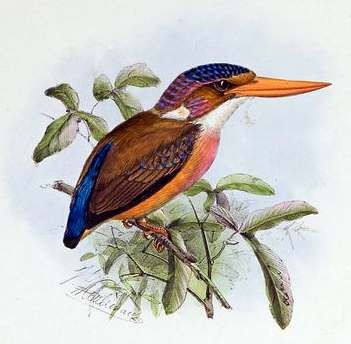The Sulawesi dwarf kingfisher is neither common nor especially well known. But does that justify naming the poor bird “the trickster,” as Hermann Schlegel did in 1866?

It’s not an infrequent name in the history of ornithology, fallax, and in this case, the original namer fills us in on his reasons for calling a newly discovered bird sneaky:
Messrs von Rosenberg and Renesse van Duivenbode have sent us the skins of a species of kingfisher that, because of its small size and coloration, one would at first glance be tempted to think belonged to the three-toed species that make up the modern naturalists’ subgenus Ceyx. Our new species, however, is furnished with four toes, and thus, it forms, so to speak, the transition from the Ceyx kingfishers to the others — while at the same time showing that the distinction based on the number of toes is entirely secondary and artificial.
Tricky!

